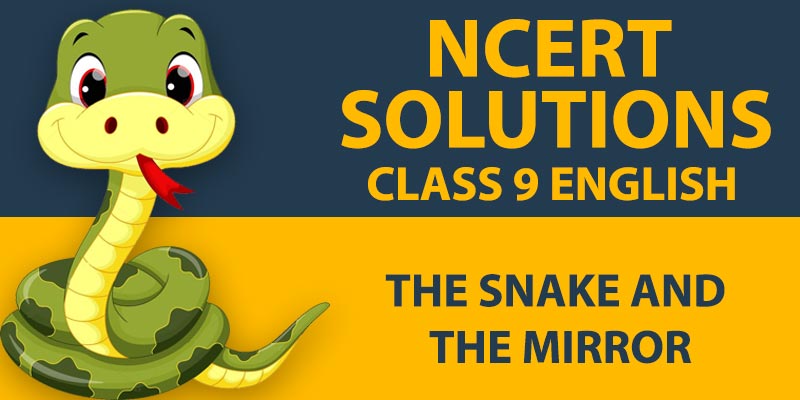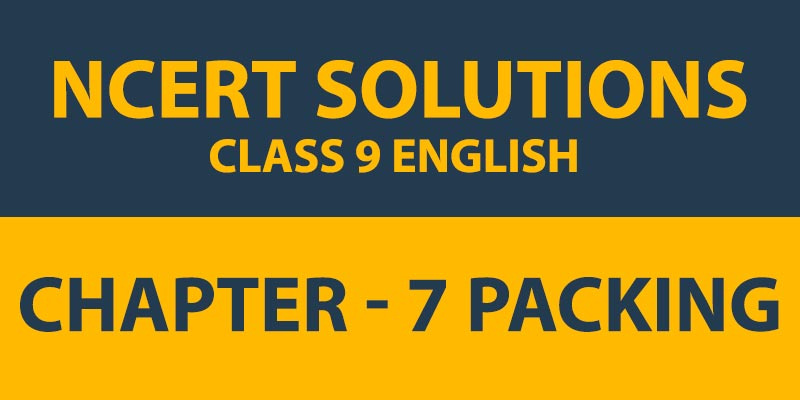CBSE Class 10 English First Flight Poem Explanation Notes with Summary, Question Answers
Dust of Snow 10th Class English First Flight Poem– Detailed explanation of the chapter along with meanings of difficult words. Also, the explanation is followed by the literary devices used and a Summary of the Chapter. All the exercises and NCERT Answers and Questions given at the back of the chapter have been covered. The poem “Dust of Snow” by Robert Frost is a short and simple poem, yet with a larger and deeper meaning. The poet explains how a small act of experiencing snow on one’s body can shine one’s day up.
10th Class English First Flight Poem
Dust of Snow
The way a crow
Shook down on me
The dust of snow
From a hemlock tree
Has given my heart
A change of mood
And saved some part
Of a day I had rued.
Dust of Snow Summary
The short poetry by Robert Frost throws light upon the healing power of tiny and natural things. Nature has the power to cure ill health or even bad mood. The poet was experiencing one such bad day when a crow’s movement near a Hemlock tree-dusted snow upon him. The snow instantly makes him happier. His day gets a lot better.
Thus, the status and power of nature as a whole made him realize how small his problem was. Facts prove that the Hemlock tree is poisonous. At the same time crow being the indicator of fear and doom are used in the poetry as the carriers of happiness in the life of the narrator. These statements are ironical. The author, through these objects has tried to highlight that sometimes creatures linked with negative aspects of life can be the happiness and bringer of change. Being outdoors in nature is always a pleasure.
Dust of Snow Explanation
The way a crow
Shook* down on me
The dust of snow
From a Hemlock* tree
The poet is in a bad mood. He walks by a Hemlock tree. Hemlock is a poisonous tree with white flowers. As he passes by, the snow dust falls on him. The crow shook the tree and thus the snow dust falls on the poet. There is a little bit of suspense in this poem as the poet has not mentioned the action of the bird. He hasn’t even mentioned his own position. He could be standing under the tree or passing by. Both the Hemlock tree and the Crow signify sadness and gloom. The poet was also in a similar mood of sadness.
Has given my heart
A change of mood
And saved some part
Of a day I had rued*.
The author, Robert Frost was in a terrible mood somehow. He feels a sudden change of mood when the snow dust falls on him. Since he was already in a bad mood, the rest of the day was saved by nature. Nature here means the Hemlock tree and the crow. Usually, this tree and the crow, both are considered negative. The poet has used them sarcastically to bring happiness. Nature is a blessing and we all are part of it.
Word Meanings Dust of Snow
Shook – to shake
Hemlock- A poisonous tree with small white flowers
Rued- Held regretfully
Dust of Snow Detailed Explanation
In this poem, the poet is talking about a winter’s day when all the treetops were covered with snowflakes. This was a hemlock tree; an evergreen pine. Hemlock tree is usually associated with poison and toxicity. On the spur of the moment, the beautiful snow that adorns the poisonous hemlock tree’s branches is shaken off by a crow and the crow happens to send some snow dust down on the man and it unexpectedly falls on the poet like rain. The snowflakes were so light and small that the poet thought they looked like white and immaculate dust particles. The first stanza is the speaker setting the scene but leaving a little bit of suspense and guesswork for the reader as the poet has not mentioned the action of the bird. He hasn’t even mentioned his own position. He could be standing under the tree or passing by. The fact that hemlock tree is a symbol of toxicity combined with crow being the indicator of doom and fear are used in the poem as the carriers of happiness in the life of narrator is ironical. The crow, traditionally symbolizes a harbinger of bad omen and emblem of death and fear, becomes a catalyst for positive change and does a good deed by shaking off the snow.
For reasons unknown, the author was having a terrible day. The cold and velvety snow changes the poet’s mood from bitter to elate. The speaker, because of the snow dust falling on him, finds himself partially relieved – his day just got a whole lot better – the event somehow allowing him to see life from a different angle. Earlier, he had been in a despairing mood and he had decided, in his mind, that his day would go total waste. However, the shower of dust like snow on him changed his mind and gladdened his heart. It made him feel that the day had not been a complete waste. At least some part of that day had been pleasant, since it had given him a new experience that he could treasure. He realized how even trivial things can bring positive changes in our life and can illuminate our soul and motivate us to do better. He notices the unimaginable healing power of nature and tiny things. This poem illustrates the power that nature sometimes has over human beings. The message is clear enough.
Moral: Sometimes seemingly insignificant natural events that too concluded by a creature which is usually linked with negative aspects of life becomes the bringer of positive change.
Dust of Snow Literary Devices
- Rhyme Scheme – ABAD CDCD
- Alliteration – It means the occurrence of the same sound or letter at the beginning of adjacent/closely connected Words.
Instances of Alliteration are below-
- Has given my Heart
- And saved some part
Enjambment– When the same sentence continues to the next line and there is no use of punctuation, then this is Enjambment.
Assonance – In santza 2, Shook Down On me- the “o” sound is prominent, when the vowel sound is prominent throughout the line, it is called Assonance.
Inversion – you can see inversion in the first stanza. When the structure of a sentence is changed to rhyme, it is called inversion.
Also See: Fire and ICE Class 10 CBSE English Poem
Dust of Snow NCERT Solutions
Q1. How and Where do you find the poet in the start-up of the poem?
A. The poet is under the Hemlock tree and he is in a sad mood.
Q2. Where is crow at that time and what does it do to the tree?
A. The crow is sitting on the tree and it shook the tree.
Q3. How does the poet’s mood get changed?
A. The poet’s mood gets changed after the falling of dust of ice on him.
Q4. What happened with the rest of the day of the poet?
A. Since the poet felt fresh and happy now, the rest of the day was saved from getting ruined.
Q5. What is a “dust of snow”? What does the poet say has changed his mood? How has the poet’s mood changed?
A. The dust of snow means the tiny particles of snow. The falling of snow on the poet changed his mood. The cold and soft touch of snow changed the poet’s mood from sad to happy. Now he feels quite fresh.
Q6. How does Frost present nature in this poem?
1. What birds are usually mentioned in poems? What comes to your mind when you think of a crow?
A. Frost presents nature in various manners in the poem. Generally, poets take the trees and birds which are known for their good qualities and beauty like a parrot, peacock, cuckoo, trees and mynah full of fruits and beautiful flowers, etc. Here Frost chosen a crow. A bird which is black in colour with a very harsh voice and believed to be the symbol of bad omen.
2. What is a Hemlock tree? Why doesn’t the poet choose any other beautiful Tree?
A. Likewise, the hemlock tree is a poisonous plant with white flowers. It means he has left all the beautiful colours present in the world and has chosen white and black. Actually the poet has done so to present his feelings and sad mood. The hemlock tree and crow represent depression and sorrow felt by him in this materialistic world. On the other hand, the dust of snow is the symbol of energy and natural joy. It means passing through the depressing and sad moments the poet is entering into the time full of optimism and joy.
Also See:
- Dust of Snow English Poem 1 Summary, Explanation
- Fire and ICE English Poem 2 Summary, Explanation
- A Tiger in the Zoo Poem 3, Summary, Explanation, Solutions
- How to tell Wild Animals Poem 4
- The Ball Poem 5 Summary, Explanation
- Animals Poem 6, Summary, Explanation, Solutions
- The Trees Poem Poem 7, Summary, Explanation, Solutions
- Mijbil The Otter Chapter 8 Class 10 English
- Madam Rides the Bus Class 10 English Chapter 9
- Glimpses of India Chapter 7 English Class 10
- A Letter to God Class 10 English First Flight Chapter 1
- Two Stories About Flying Class 10 English First Flight Chapter 3
- Long Walk to Freedom Class 10 English First Flight Chapter 2
- The Diary of Anne Frank Class 10 English First Flight Chapter 4
- The Hundred Dresses Part 1 Chapter 5 Class 10 English First Flight
- The Hundred Dresses-II Chapter 6 Class 10 English First Flight





